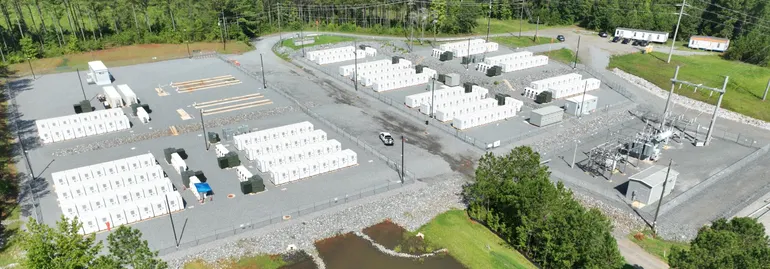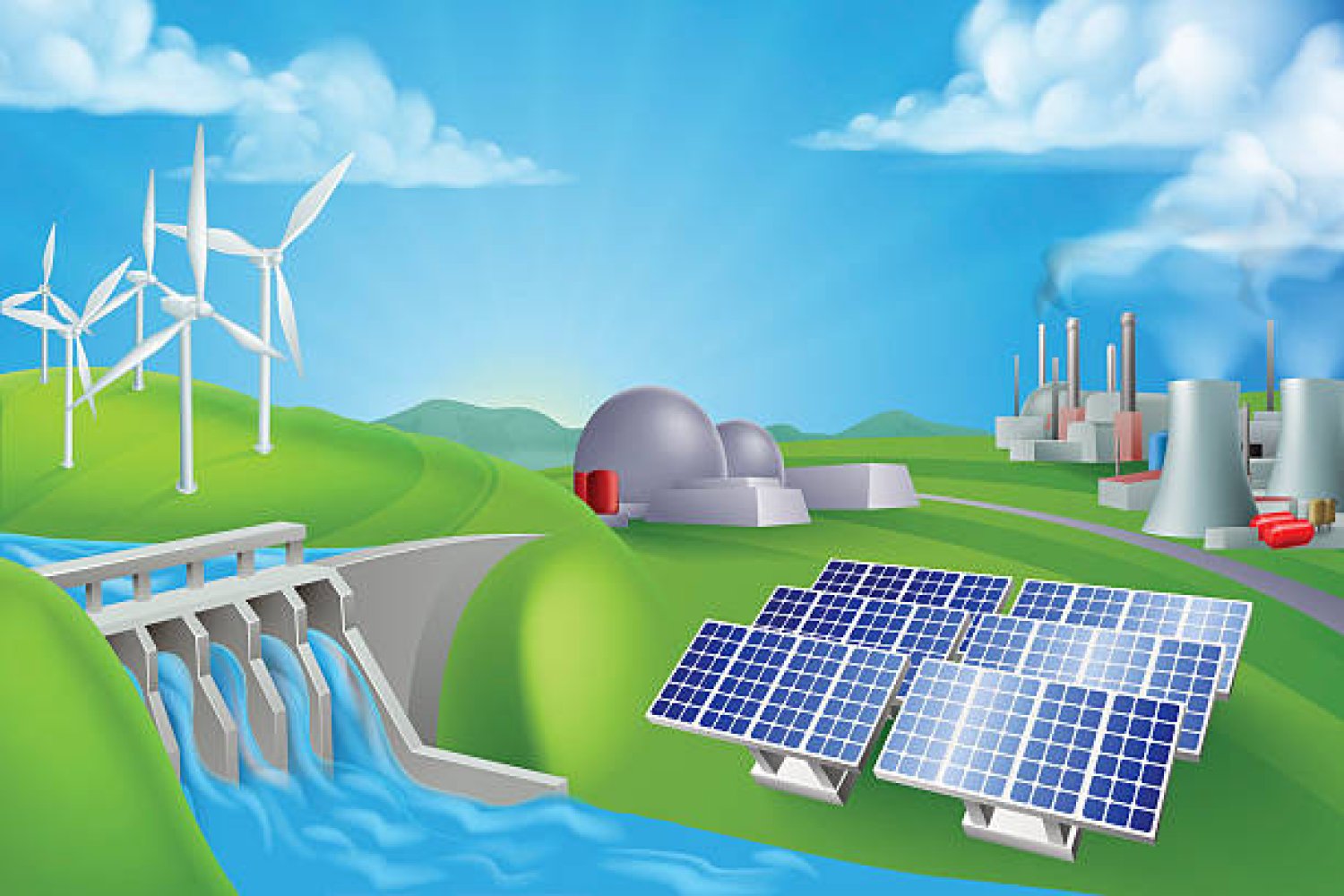FLASH: Hithium signs a 2 GWh energy storage system supply agreement with Solarpro – Mysteel

Hithium and Solarpro Partnership Advances Sustainable Development Goals through Energy Storage Solutions
Executive Summary of Strategic Agreement
A significant agreement has been finalized between Hithium, a stationary battery manufacturer, and Solarpro, a leading European Engineering, Procurement, and Construction (EPC) firm. The partnership focuses on the supply of 2 GWh of battery energy storage systems (BESS) for deployment in Eastern Europe. This collaboration is a direct contribution to several United Nations Sustainable Development Goals (SDGs) by advancing the region’s clean energy infrastructure.
Direct Contributions to Sustainable Development Goals (SDGs)
The agreement materially supports the global sustainability agenda, with a primary focus on the following SDGs:
- SDG 7: Affordable and Clean Energy: The deployment of 2 GWh of long-duration energy storage is fundamental to increasing the share of renewable energy in the global energy mix. These systems will enhance grid stability, allowing for greater integration of intermittent solar and wind power, thereby making clean energy more reliable and accessible.
- SDG 13: Climate Action: By facilitating the transition from fossil fuels to renewable energy sources, this initiative directly contributes to mitigating climate change. Large-scale energy storage is a critical tool for reducing greenhouse gas emissions from the power sector.
- SDG 9: Industry, Innovation, and Infrastructure: The agreement promotes the development of resilient and sustainable infrastructure. It leverages innovative battery technology, including Hithium’s advanced 1175 Ah and 587 Ah cells, fostering technological progress in the energy sector.
- SDG 17: Partnerships for the Goals: This cross-border collaboration between Hithium and Solarpro exemplifies a strategic partnership between a technology provider and an implementation specialist to achieve shared sustainable development objectives.
Technical Specifications and Project Scope
The core of the supply agreement involves Hithium’s advanced energy storage solutions tailored for utility-scale applications. Key technical components include:
- Primary System: Hithium’s Power 6.25 MWh battery energy storage system.
- Cell Technology: The systems will be equipped with 4h-dedicated Cell 1175 Ah and new-generation large-capacity 587 Ah battery cells, designed for long-duration storage.
- Geographic Focus: Utility-scale energy storage projects across multiple countries in Eastern Europe.
Market Context and Broader Impact
This 2 GWh agreement is part of a larger trend of Hithium’s expanding global footprint in support of energy transition goals.
- Recent European Expansion: In September, Hithium also announced a 3 GWh cooperation agreement with BOS Power to deploy energy storage projects in Denmark, Sweden, Finland, and Norway by 2027, further reinforcing its commitment to SDG 7 in Europe.
- Cumulative Contribution: According to available data, Hithium’s publicly disclosed major energy storage orders since 2025 have now surpassed 35 GWh, indicating a substantial and growing contribution to the global infrastructure required for a sustainable energy future.
Analysis of Sustainable Development Goals (SDGs) in the Article
1. Which SDGs are addressed or connected to the issues highlighted in the article?
-
SDG 7: Affordable and Clean Energy
- The article focuses on the supply of large-scale battery energy storage systems. These systems are critical for ensuring a stable and reliable supply of clean energy, particularly from intermittent renewable sources like solar, which is explicitly mentioned through the partnership with “Solarpro, a leading European EPC specializing in solar and storage.” By enabling greater use of renewables, these projects contribute directly to the goal of providing affordable and clean energy.
-
SDG 9: Industry, Innovation and Infrastructure
- The deployment of “advanced long-duration energy storage solutions” like the “Power 6.25 MWh battery energy storage system” represents a significant upgrade to energy infrastructure. This technology is an innovation that makes the energy grid more resilient, efficient, and sustainable, aligning with the goal of building resilient infrastructure and fostering innovation.
-
SDG 13: Climate Action
- Energy storage systems are a key enabling technology for the transition away from fossil fuels. By facilitating the large-scale integration of renewable energy, the projects described in the article help reduce greenhouse gas emissions from the power sector, which is a fundamental component of taking urgent action to combat climate change.
-
SDG 17: Partnerships for the Goals
- The article is centered on international agreements and cooperation. It details a partnership between Hithium and European companies like Solarpro and BOS Power to deploy clean energy technology across multiple countries (“several countries and regions in Eastern Europe” and “Denmark, Sweden, Finland, and Norway”). This cross-border collaboration to achieve sustainable development is the essence of SDG 17.
2. What specific targets under those SDGs can be identified based on the article’s content?
-
Target 7.2: By 2030, increase substantially the share of renewable energy in the global energy mix.
- The article discusses utility-scale energy storage projects linked with solar power. These systems directly support the integration of more renewable energy into national grids, thereby helping to increase its overall share in the energy mix.
-
Target 7.a: By 2030, enhance international cooperation to facilitate access to clean energy research and technology… and promote investment in energy infrastructure and clean energy technology.
- The agreement between Hithium and its European partners (Solarpro, BOS Power) is a clear example of international cooperation to deploy advanced clean energy technology (battery storage) and invest in modern energy infrastructure.
-
Target 9.4: By 2030, upgrade infrastructure and retrofit industries to make them sustainable, with increased resource-use efficiency and greater adoption of clean and environmentally sound technologies…
- The deployment of gigawatt-hour scale battery systems is a direct upgrade of energy infrastructure, making it more sustainable and capable of handling clean technologies. The article highlights the adoption of “advanced long-duration energy storage solutions” as part of this upgrade.
-
Target 17.16: Enhance the global partnership for sustainable development, complemented by multi-stakeholder partnerships that mobilize and share knowledge, expertise, technology and financial resources…
- The deals described are multi-stakeholder partnerships (between technology suppliers and EPCs) that mobilize and transfer technology (Hithium’s battery systems) and financial resources to achieve a common sustainable development objective across several countries.
3. Are there any indicators mentioned or implied in the article that can be used to measure progress towards the identified targets?
- Yes, the article provides several quantitative figures that can serve as direct or proxy indicators for measuring progress.
-
Specific Quantitative Indicators Mentioned:
- Total Energy Storage Capacity: The article explicitly states the capacity of the supply agreements, such as “a 2 GWh energy storage system supply agreement with Solarpro” and projects with a “total capacity of 3 GWh” with BOS Power. These figures (2 GWh, 3 GWh) are direct indicators of the scale of investment and deployment of clean energy infrastructure.
- Cumulative Orders: The statement that “Hithium’s cumulative publicly disclosed major energy storage orders since 2025 have now exceeded 35 GWh” serves as a powerful aggregate indicator of the company’s contribution to the expansion of energy storage infrastructure.
- System Specifications: Mention of specific systems like the “Power 6.25 MWh battery energy storage system” and new battery cells (“4h-dedicated Cell 1175 Ah” and “587 Ah”) are indicators of technological advancement and innovation being deployed (relevant to SDG 9).
-
Implied Measurement of Progress:
- These quantitative measures of deployed capacity (GWh) act as a proxy for progress towards official SDG indicators. For example, while the article does not state the final “renewable energy share” (Indicator 7.2.1), the deployment of GWhs of storage is a direct action that enables an increase in that share. Similarly, this capacity is an indicator of the implementation of climate action policies (SDG 13) and the tangible outcome of international partnerships (SDG 17).
Summary Table of SDGs, Targets, and Indicators
| SDGs | Targets | Indicators |
|---|---|---|
| SDG 7: Affordable and Clean Energy | 7.2: Increase the share of renewable energy. 7.a: Enhance international cooperation and investment in clean energy technology. |
Total capacity of energy storage systems in agreements (e.g., 2 GWh, 3 GWh) as a measure of investment and infrastructure for enabling renewables. |
| SDG 9: Industry, Innovation and Infrastructure | 9.4: Upgrade infrastructure with clean and environmentally sound technologies. | Deployment of specific advanced technologies, such as the “Power 6.25 MWh battery energy storage system” and new-generation battery cells. |
| SDG 13: Climate Action | 13.2: Integrate climate change measures into national policies, strategies and planning. | The implementation of utility-scale storage projects (measured in GWh) as tangible evidence of climate action strategies being executed. |
| SDG 17: Partnerships for the Goals | 17.16: Enhance the global partnership for sustainable development. | The number and scale (GWh) of international agreements between companies (Hithium, Solarpro, BOS Power) to deploy sustainable technology across multiple countries. |
Source: mysteel.net

What is Your Reaction?
 Like
0
Like
0
 Dislike
0
Dislike
0
 Love
0
Love
0
 Funny
0
Funny
0
 Angry
0
Angry
0
 Sad
0
Sad
0
 Wow
0
Wow
0
















































/environment-climate-change-and-health-(ech)/water-sanitation-hygiene-and-health-(wsh)/landfill-tuvalu-36092.tmb-1200v.jpg?sfvrsn=5c21fe40_1#)

.jpg.webp?itok=0ZsAnae9#)

























